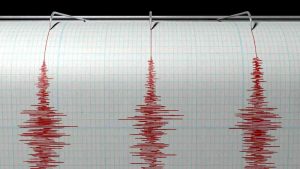
By examining earthquake models from a fresh perspective, Cornell University engineers now show that the earthquake fracture energy — once thought to relate to how faults in the Earth’s crust weaken — is related to how quakes stop.
This modeling revelation could help science inch closer to making accurate earthquake forecasts.
“We realized that observations we thought were related to how faults weaken are actually data related to how an earthquake stops,” said Greg McLaskey, assistant professor in the School of Civil and Environmental Engineering, in the College of Engineering. “We’ve observed that earthquake fracture energy is more related to the overall rupture style — such as crack-like or pulse-like rupture — instead of a specific slip-weakening relationship (the way the crust weakens when plates slide past each other).”
The work, “Earthquake Breakdown Energy Scaling Despite Constant Fracture Energy,” was published Feb. 22 in Nature Communications. In addition to McLaskey, the lead author was Chun-Yu (Huey) Ke, Ph.D. ’21, and David S. Kammer at the Institute for Building Materials, ETH Zu?rich, Switzerland. The research was supported by the National Science Foundation.
Research over the past 25 years has focused on earthquake fracture energy or breakdown energy usually estimated from ground shaking, McLaskey said.
That research had linked earthquake fracture energy to the way the Earth’s crust weakens during an earthquake. But by studying large-scale rock experiments — at the Bovay Laboratory Complex — between two two-ton granite slabs, the researchers at Cornell found that those models may have been slightly askew.
The lab’s computer models suggested that those seismic observations are not directly related to fracture energy, but instead, the new research indicated, the seismic observations depend on how the earthquake ends, as related to either a pulse-like or crack-like rupture style.
For a pulse-like rupture, the fault resembles an inchworm moving along a surface. The inchworm doesn’t jump, McLaskey said, and only a little bit moves at a time. In a crack-style rupture, the fault resembles a zipper.
Seismologists have been measuring the fracture energy (sometimes called breakdown energy) of earthquakes. “That parameter of an earthquake should not be interpreted as a weakening of the crust,” he said, “but whether the earthquake rupture is a pulse or a crack.”
When earthquakes do occur, they end. The slipped part of the fault tapers off and eventually merges with part of the crust that is not ruptured. “Think of a car approaching a stop sign,” he said. “You don’t stop abruptly. You see the sign and you apply the brakes — but the factor we’ve introduced is whether you’re coming to a stop sign going uphill, downhill or on a flat surface.”
The engineers found that when they slammed on the experimental brakes, they could not get the ruptures to stop. “The only way we could get our ruptures in the lab to stop is by making ‘a hill,’ so to speak,” McLaskey said. “We introduced that factor into our model and it began to make sense.”
Earthquakes are unpredictable, he said, discussing early warning technology used around the world in Japan and Mexico, and now being developed in California.
“If you get a 1-second warning because of sensors that there will be an earthquake — maybe a 10-second warning — you’ll be lucky,” he said.
“One of the reasons why it is difficult to predict earthquakes is because scientific modeling equations don’t always add up,” McLaskey said. “This paper is a step in the right direction. We’re getting a better understanding of these models — hopefully leading to an ability to predict earthquakes.”
McLaskey is a faculty fellow at the Cornell Atkinson Center for Sustainability.
Reference:
Chun-Yu Ke, Gregory C. McLaskey, David S. Kammer. Earthquake breakdown energy scaling despite constant fracture energy. Nature Communications, 2022; 13 (1) DOI: 10.1038/s41467-022-28647-4
Note: The above post is reprinted from materials provided by Cornell University. Original written by Blaine Friedlander.










